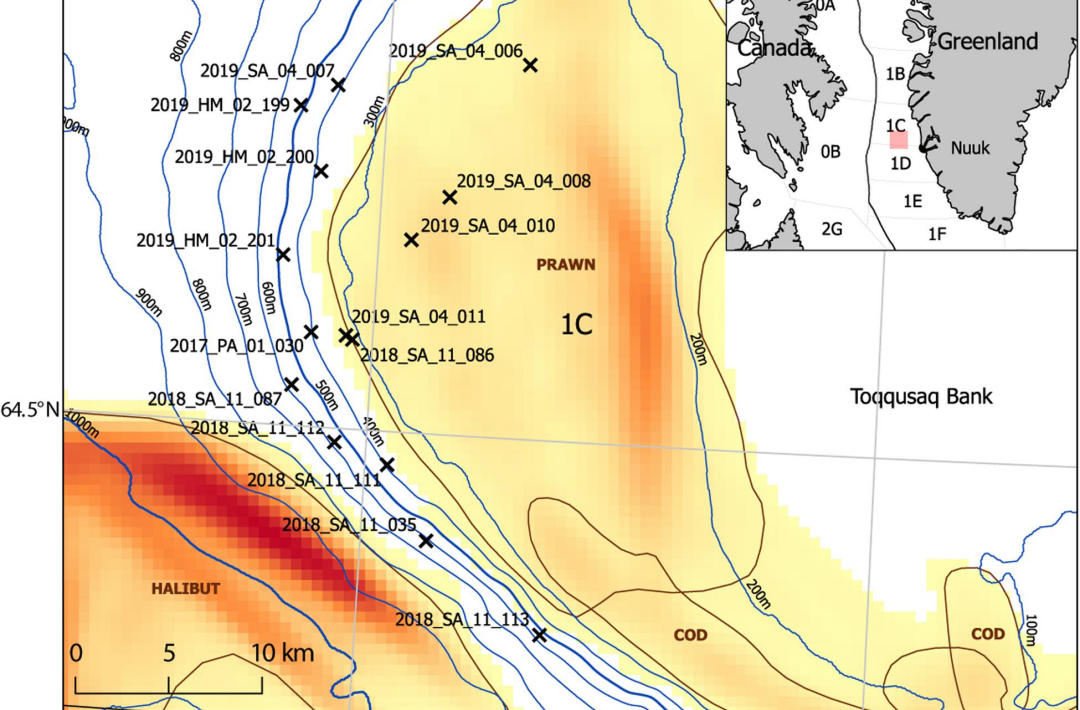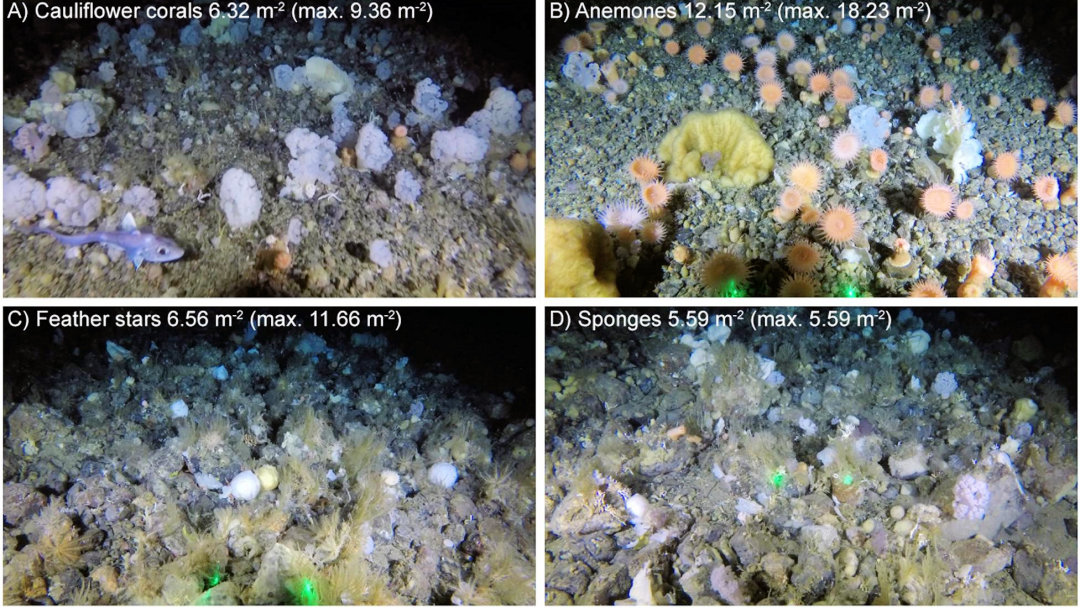In the deep-sea areas one finds eternal darkness, cold temperatures and high pressures. Nevertheless, a rich marine life dwells in many regions, often consisting of invertebrates such as sponges, sea cucumbers and corals. Also from the little-explored deep areas of the Arctic Ocean, numerous deep-sea inhabitants are now known. Research expedition always find new species in the cold depths. Now, an international team off the west coast of Greenland has discovered coral gardens in depths of between 500 and 1,000 metres. One area has been particularly at the centre of interest and is to be converted into a protected area. Now an international team off the west coast of Greenland has discovered coral gardens that are between 500 and 1,000 metres deep.
The area, which is particularly highlighted by the research team, consisting of British and Greenlandic scientists, is located on the continental slope of the Toqqusaq Bank west of Nuuk. Here, the researchers found a variety of invertebrates on video footage in an area of nearly 500 square kilometers. The most represented groups were the anemones and the cauliflower corals. This is especially important since these animals have been found in large numbers only around Iceland until now. In total, the scientists discovered more than 44,000 individuals at 18 locations during their work in the Davis Strait. This waterway separates Greenland from Canada and is important for Greenland both logistically and economically.

« We hope that studies like this will increase our understanding of ecological relationships, and contribute to sustainable fisheries management»
Dr. Martin Blicher, Greenland Institute of Natural Resources
The garden, which the researchers discovered, is situated in about 500 metres depth and shows an enormous variety of different invertebrates. In addition to the anemones, the scientists also discovered numerous sea and feather stars, brittlestars, sponges and even fish and squid. A previously unknown world unfolded in front of them. “Greenland’s seafloor is virtually unexplored, although we know is it inhabited by more than 2,000 different species together contributing to complex and diverse habitats, and to the functioning of the marine ecosystem,” explains Dr. Martin Blicher of the Greenland Institute of Natural Resources. He was one of the authors of the study and also emphasizes the importance of knowledge of these areas. “Despite knowing so little about these seafloor habitats, the Greenlandic economy depends on a small number of fisheries which trawl the seabed. We hope that studies like this will increase our understanding of ecological relationships, and contribute to sustainable fisheries management,” says Blicher.
“We’ll be working with the Greenland government and fishing industry to ensure this fragile, complex and beautiful habitat is protected.”
Stephen Long, University College London
The team also hopes for the understanding of the local fishermen and authorities, as the garden, which they consider ecologically important, is also located in an economically important zone with rich halibut areas. These fish are caught with trawling nets that are pulled across the seabed and cause massive damage. “We’ll be working with the Greenland government and fishing industry to ensure this fragile, complex and beautiful habitat is protected,” says Stephen Long, a PhD student at University College London and the first author of the paper.

An important aspect that the researchers highlight in their work is the device that had been used to study the seabed. It is a mini-Cooper-sized sled, on which, in addition to lamps and lasers, a commercially available GoPro in a pressure-resistant container was installed. The whole device is a cost-effective and practical way to conduct deep-sea research. “The development of a low-cost tool that can withstand deep-sea environments opens up new possibilities for our understanding and management of marine ecosystems,” says Long. “Our research is certainly the first example of a low-cost Do-it-Yourself video sled led being used to explore deep-sea habitats in Greenland’s 2.2 million square kilometres of sea.”
Dr Michael Wenger, PolarJournal
Link zur Studie: Long et al (2020) Fron Mar Scie 7:460, doi.org/10.3389/fmars.2020.00460





